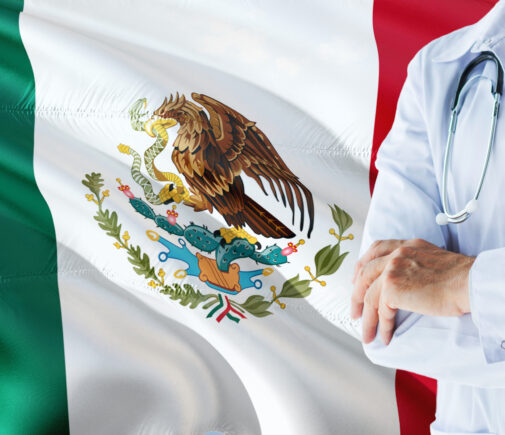Jane C. Says:
I’m interested in moving to Mexico very soon. I’m retired and have Medicare and a medi gap policy. I’m aware these will not cover me in Mexico.
Do you have any suggestions for affordable healthcare in Mexico for a U.S. citizen?
IL Latin America Correspondent Jason Holland Says:
 Hi Jane,
Hi Jane,
It’s true that, broadly speaking, Medicare and Medicaid do not travel with you outside the United States. And while you can pay for private health insurance in Mexico, because healthcare costs are relatively low, many expats choose to pay out-of-pocket for procedures.
Mexico also has two national healthcare systems, which expats on a valid residence visa can apply to join: IMSS (Instituto Mexicano del Seguro Social, or Mexican Social Security Institute) and INSABI (Instituto de Salud para el Bienestar), which replaced the old Seguro Popular program.
IMSS is roughly modeled on the Canadian and British socialized medical systems. The cost for participating in IMSS is low—it runs from about $120 a year for children and adolescents, up to about $900 for those in their 60s—and it includes medications.
You must ask to join IMSS—you aren’t signed up automatically. And you must apply in the Mexican state where you live. You’ll generally have to pay the entire year’s fee upfront. Another drawback with this system is that some pre-existing conditions are not covered, and some conditions could disqualify you completely from joining the IMSS program.
INSABI is for Mexicans who are self-employed or unemployed, and who therefore do not qualify for IMSS. INSABI covers medical treatment and medications, it’s free, and there is no enrollment process. You simply show up at a facility with your residence documents to receive care.
There’s no age limit for initial signup. This is a huge advantage over private health insurers, which usually won’t open a new health insurance policy for anyone over 64 years old. And the cost, of course, can’t be beat.
As with any national health system, waiting times to see a doctor or nurse can be long, and in Mexico you don’t get to choose your national health system doctor. Though medications are free, supply can be limited— which means you may end up having to buy them from private pharmacies.
There are some additional restrictions on coverage and membership in both of these programs, which you can get more details of in Chapter 8 of our Escape to Mexico guidebook.
Neither program may cover you completely… But at their low price points, these programs are a great health safety net.
If you do choose to go with private health insurance, private insurers in Mexico will insure foreign nationals living in Mexico who have a valid residence visa for Mexico.
The largest private health insurer in Mexico is Grupo Nacional Provincial (GNP).
Other private insurers offering plans that may be suitable for expats include MetLife Mexico, and Seguros Monterrey-New York Life.
Full international insurance is also an option, of course. In this regard, it’s worth mentioning that Bupa, one of the most popular international insurers, has a Mexican affiliate, Bupa Mexico.
Rates for private insurance coverage vary (just as they do in other countries), depending on your age, your pre-existing conditions, the deductible you choose, and so on. But to give you a generous guideline, you should expect to pay between $800 and $3,500 a year for your premium.
Note that you generally cannot apply for a new private health-insurance policy once you reach age 65—most health insurance companies don’t accept new policyholders after age 64.
It would be wise to consult with expats in the area you are considering to get their recommendations. Areas in Mexico that are popular with expats usually have a Facebook group, such as Expats Newcomers & Friends San Miguel de Allende, which are great sources of recommendations.
I hope this helps and we can soon welcome you as one of the 1.6 million U.S. citizens that call Mexico home.
Got a Question?
Send your thoughts to mailbag@internationalliving.com. We’ll post and respond to as many of your emails as we can right here in the e-letter.

